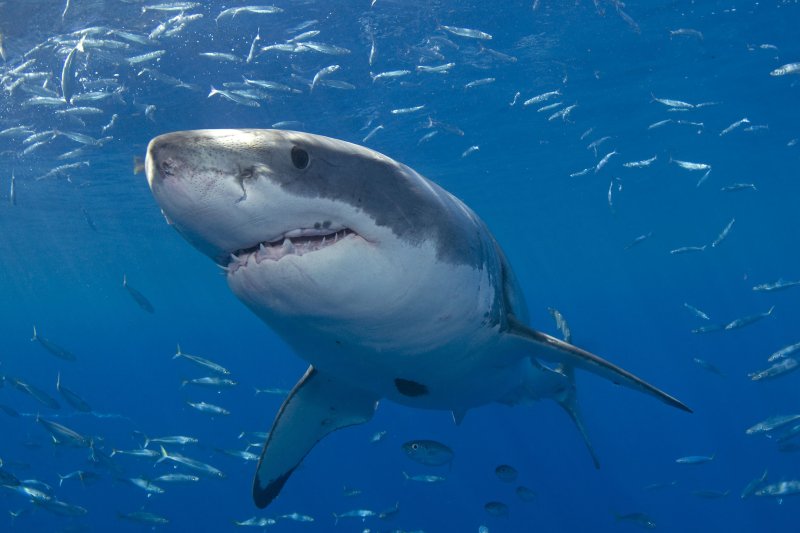A Great White is observed during behavioral research studies being conducted on Great White Sharks off of Isla Guadalupe, Mexico on September 15, 2008. Club Cantamar, primarily a tour operator has branched into conducting coordinated research with Isla Guadalupe Conservation to protect the species of sharks while offering tourists to Mexico the ability to also observe the sharks as they migrate through the area. The Conservation agency reports its findings to the Mexican Government which maintains authority on granting this activity. (UPI Photo/Joe Marino) |
License Photo
SACRAMENTO, Sept. 16 (UPI) -- California wildlife officials say they collected a record number of sea otters killed or injured by shark bites off the state's coast in August.
Seven more in September have been added to the total of 19 for last month, a Department of Fish and Game release said.
The 10-year average for August is seven, officials said.
Scientists say they believe cooler-than-average ocean temperatures from an unusually mild summer are creating an ideal condition for white sharks.
"White sharks do not typically feed on sea otters," Michael Harris, a DFG environmental scientist, said.
"Their preferred prey is seals and sea lions. This would explain why the majority of the otters collected have a single bite mark. These bites are more investigative -- like a taste test."
White sharks inhabit mostly cold, temperate seas with a surface temperature of 50 to 72 degrees Fahrenheit. As they grow, they transition from feeding on fish as juveniles to feeding on marine mammals like seals and sea lions.
"Without much data on the white shark population off California, we can only speculate as to the cause for the increase in the otter bites," Harris said. "But perhaps there are more juvenile sharks in the area, testing various prey items as they transition."















